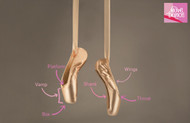A Beginner's Guide to Pointe Shoes
By Move Dance on 13th Sep 2018
Whether you’re advancing to pointe and buying your first pair or you’ve been doing pointe work for years, this pointe shoe guide for dancers will help advise you on finding the best pair for you. Learn about the different parts of a pointe shoe and different shoe types available to you, then follow our short fit and feel checks guide to make sure you’re giving your feet what they need. Now, let’s get to the pointe...
Dancing en pointe is truly a work of art, which is why our dancers need all the support we can give them to achieve such complex moves. It is a combination of body strength and shoe which enables you to dance en pointe. The legs, your core muscles and feet all play a part in being able to support yourself, however the shoe is also a vital necessity. Any ballerina doing pointe work will tell you how rewarding it can be, yet likewise how damaging to your feet it can potentially be. If you don’t wear a pair of pointes that are the correct size, fit, and level of support, you could be at risk of harming your feet.
What Are Pointe Shoes?
Pointe shoes are the shoes worn by ballet dancers. They enable them to dance on the end of the toes (en pointe) for extended periods of time while creating a weightless appearance.
What Are the Different Parts of a Pointe Shoe?
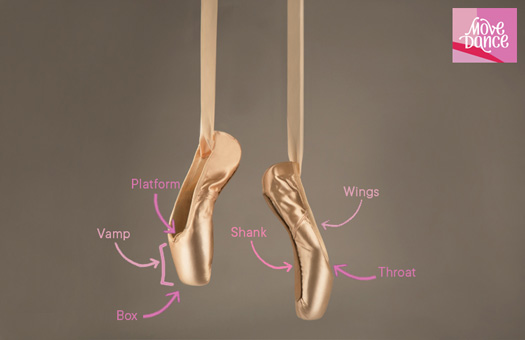
This pointe shoes glossary will teach you the basics, taking you from a knowledge novice in 30 seconds!
Box: The solid object at the front of the shoe which encloses the toes and sides of the feet. This is made up of stiffened layers of fabric and glue.
Shank: The stiff insole that provides arch support in varying strengths
Vamp: The fabric part of the shoe that pockets the tops of the toes and foot
Throat: The shoe opening which you insert your foot into
Platform: The flat edge of the box that a dancer balances on
Wings: Part of the box area of the shoe. These support the sides of the feet which helps take pressure off the toes.
What Size Pointe Shoes should I Buy?
When buying pointe shoes, you’ll be looking for a pair of pointes that have a snug fit with little movement of the foot in the shoe. If you’re a beginner, you should try our demi-pointes to help make the transition from ballet to pointe work a little softer on your feet.
You can find sizing information in product descriptions for pointe shoes, where appropriate guidance is given when necessary to order a certain size bigger or smaller than your standard sneakers size to ensure the best fit. We offer half sizes in some of our pointe shoes, and also let you choose from normal, narrow, or wide fit in some pairs.
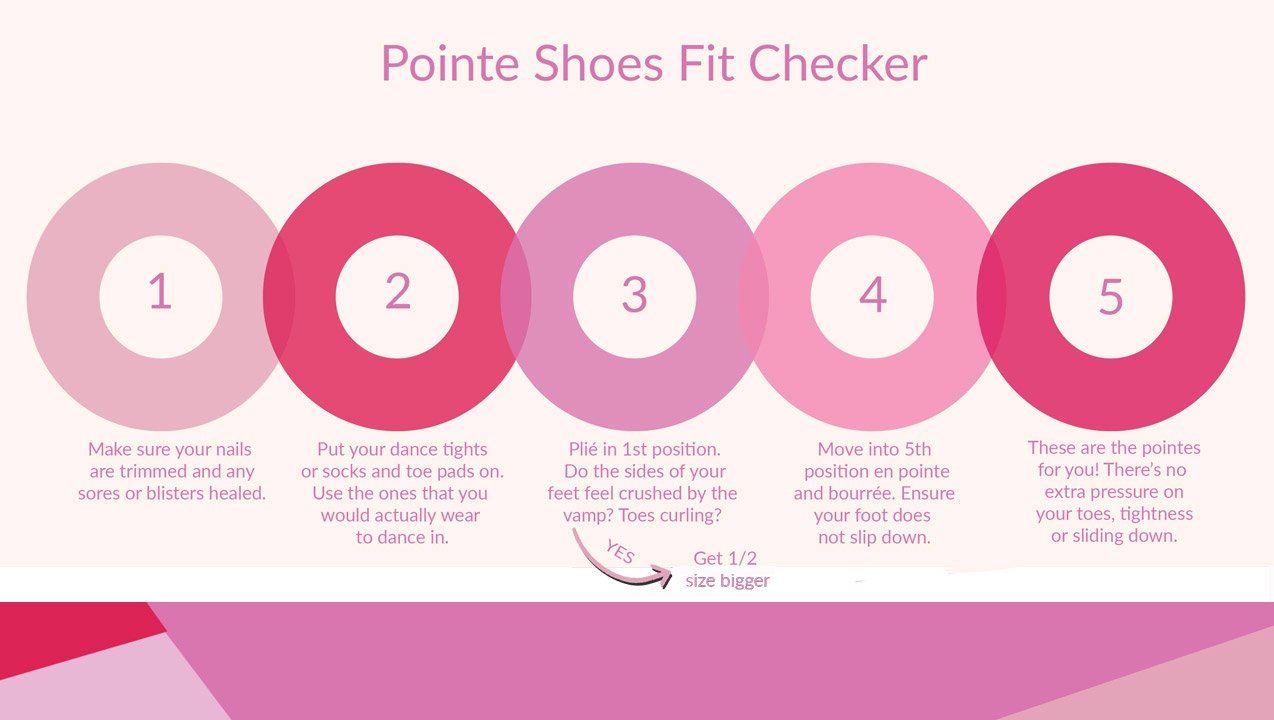
Getting the correct fit is a trial and error process so we strongly recommend finding a qualified fitter to fit your shoes. Your feet can change shape over time so what suited you once may change.
If this is your first pair of pointes, we strongly recommend finding a qualified fitter to fit your shoes.
What Are the Different Types of Soles and Shanks on Pointe Shoes?
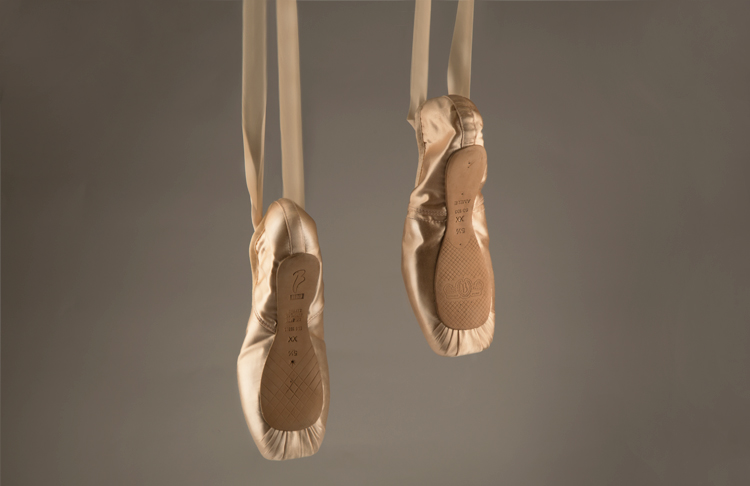
Pointe shoes have suede soles because they offer flexibility and the correct amount of grip that a ballet dancer needs. Did you know that suede is made by splitting leather to access the softer underside? Children and beginners start their pointe work training by wearing demi-pointes as they work on their technique. The shank of a pointe shoe supports the dancer whilst en pointe, and the strength and length of a shank can vary between pointe shoes. If you have flexible arches, we recommend that a harder shank would be more suited to supporting but also correctly restricting your feet from going too far over the box. But be mindful, because a harder shank can also be harder to break in at the demi area if the foot is not strong enough. Also, the weight of the dancer pressing down on the heel could cause the shank to snap rather than support and mould correctly. A less flexible foot would be better suited to a softer shank to encourage as much movement in the arches as possible, however, this can make pointe work too easy and not challenge the foot enough. It's important that your foot is working hard in order to build strength! Don't let your feet be lazy! A ballet dancer who has been dancing en pointe for years may have developed their own preference for a certain type of pointe shoe, for example, they may have strong feet and prefer a softer shank.
What Are Demi-Pointe Shoes?
Demi-pointe shoes are used as a transitional shoe from ballet shoes to pointe shoes for beginners when starting to learn pointe work. Demi-pointes strengthen and condition the foot to be ready for pointe work as they offer more resistance than a standard ballet shoe, meaning the foot has to work harder to bend and extend. They have a softer box in comparison to one that you’d wear when dancing en pointe, which means the shoes should be a little easier on your feet whilst you’re getting used to the feeling of being on your toes. The softer box means that these shoes will not support you whilst en pointe and should therefore not be used to dance in longer than the necessary training period.
What Material Are Pointe Shoes Made of?
All pointe shoes are made with satin uppers. You’ll find that satin shoes are less durable than canvas or leather ballet shoes that you may already be used to, but they do give a gorgeous shine and appearance.
How Do You Look After Your Pointe Shoes?
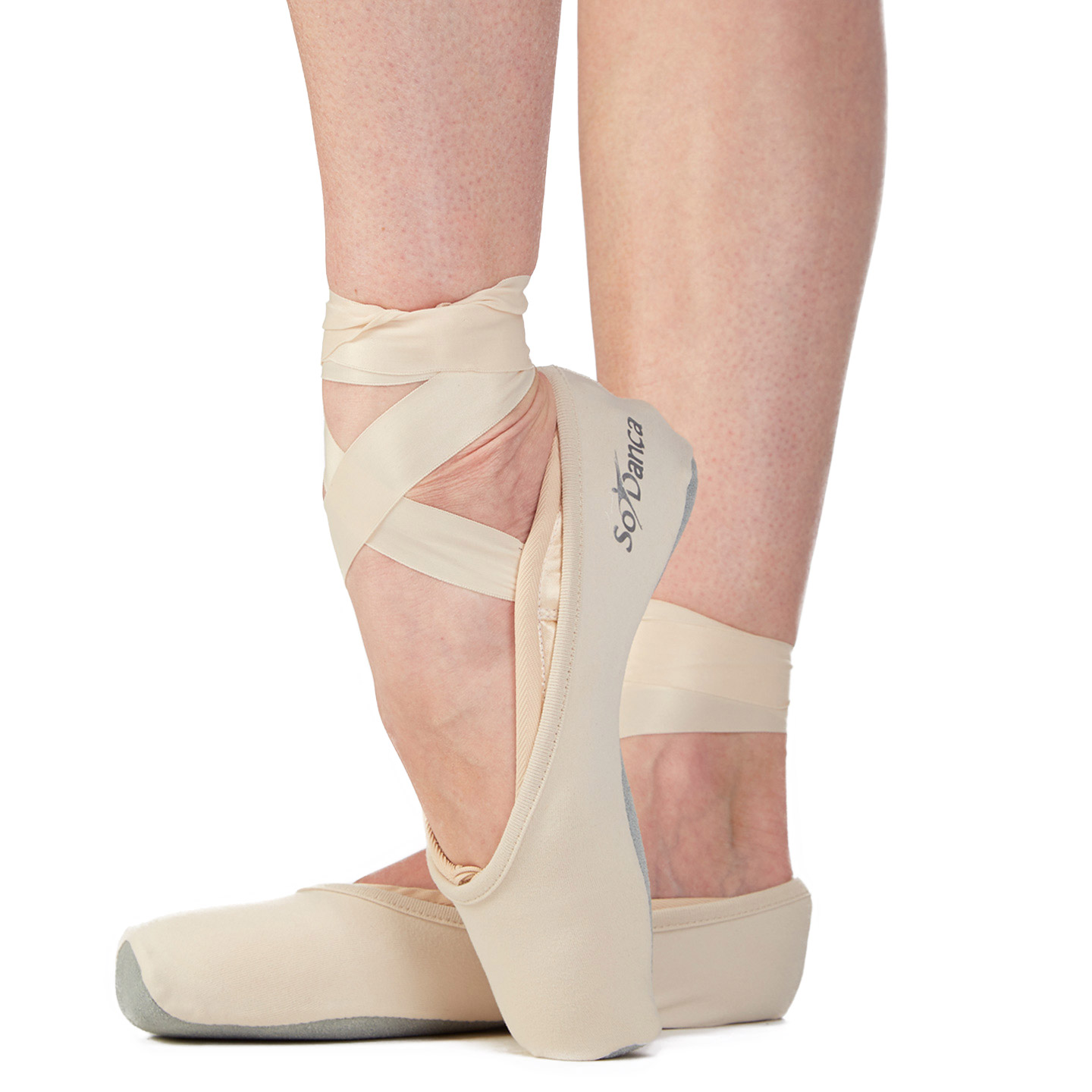
Make sure to keep your shoes away from water and any stains. You can’t clean your pointe shoes so you need to keep them as pristine as possible. You’ll notice general wear on the sole and tips of your shoes as they collect dirt from the floor while you dance. So Danca have just brought out some pointe shoe covers to help with the battle against stains, but you can’t wear them to dance in. Check out other pointe shoes accessories accessories here.
Want the best knowledge of pointe shoes in the class? Visit our blog to get some invaluable pointe shoes tips from dancers.

